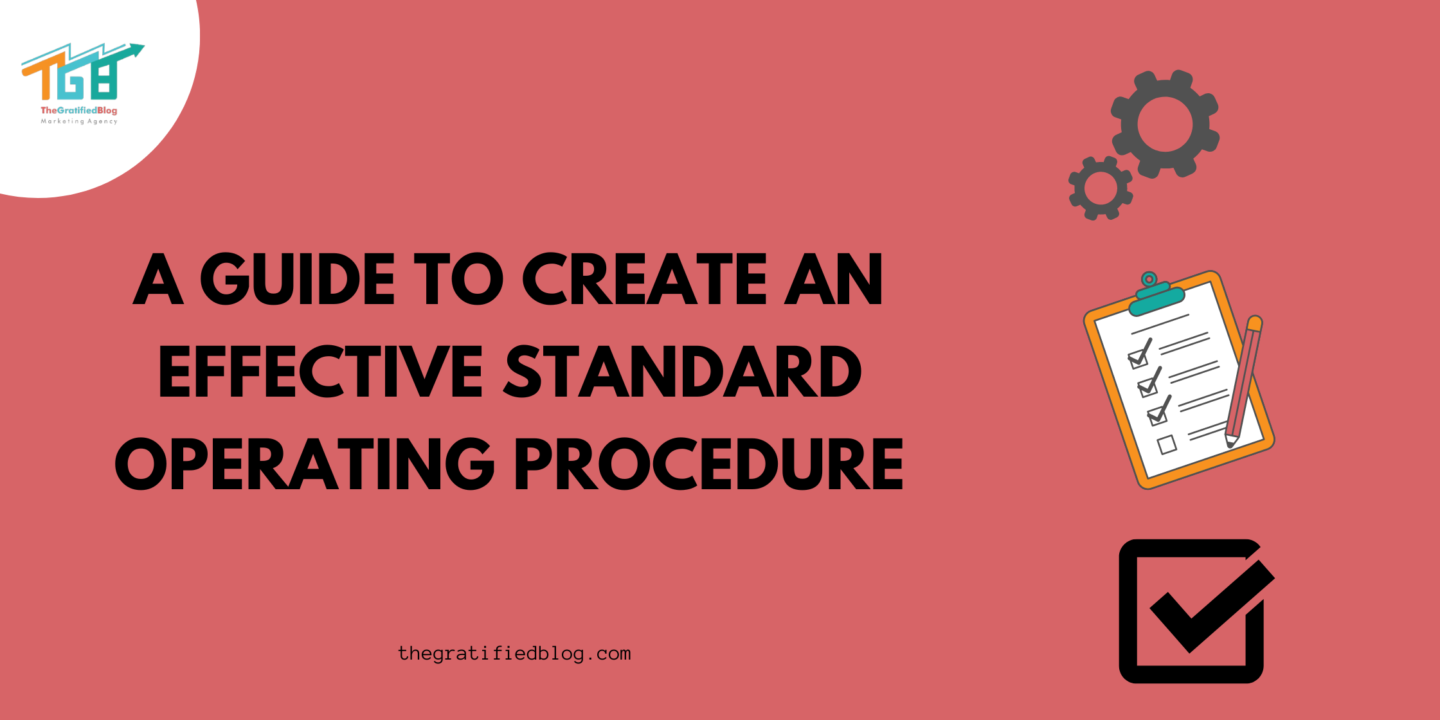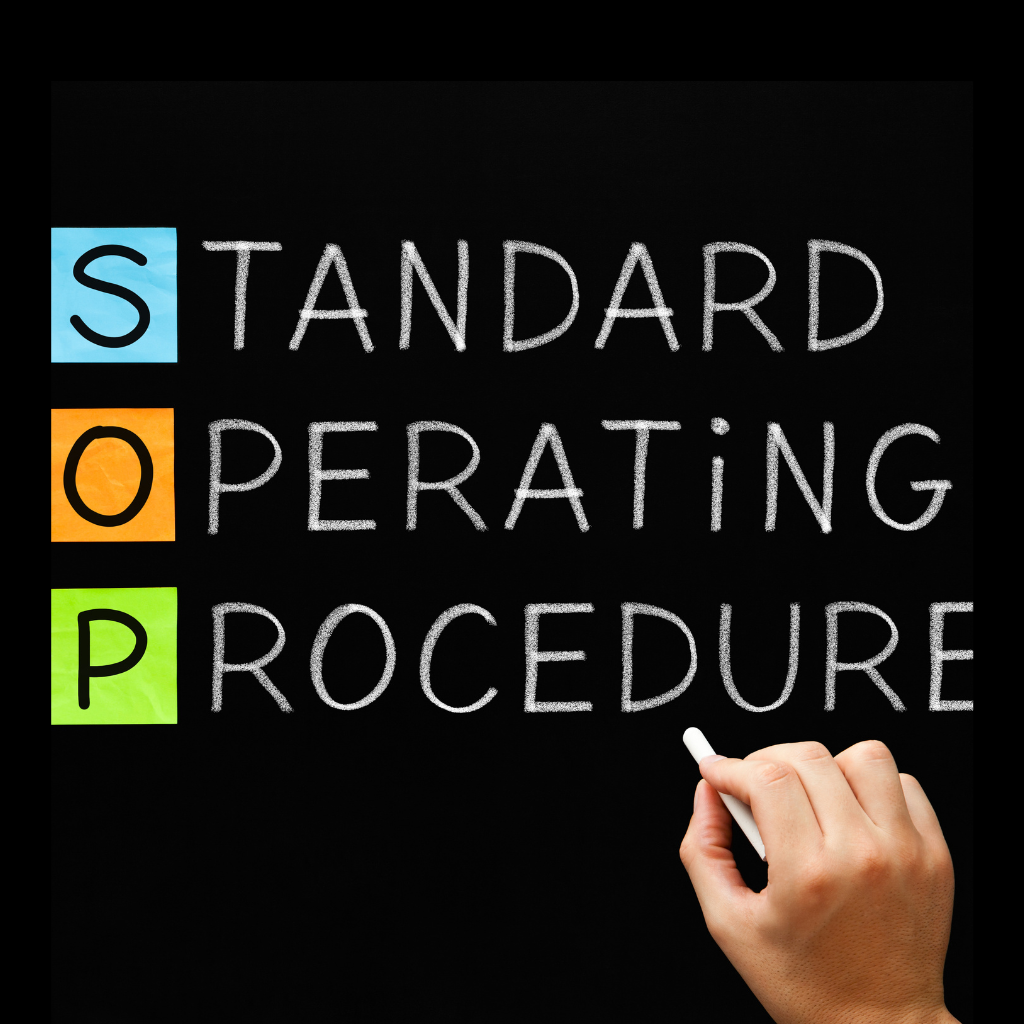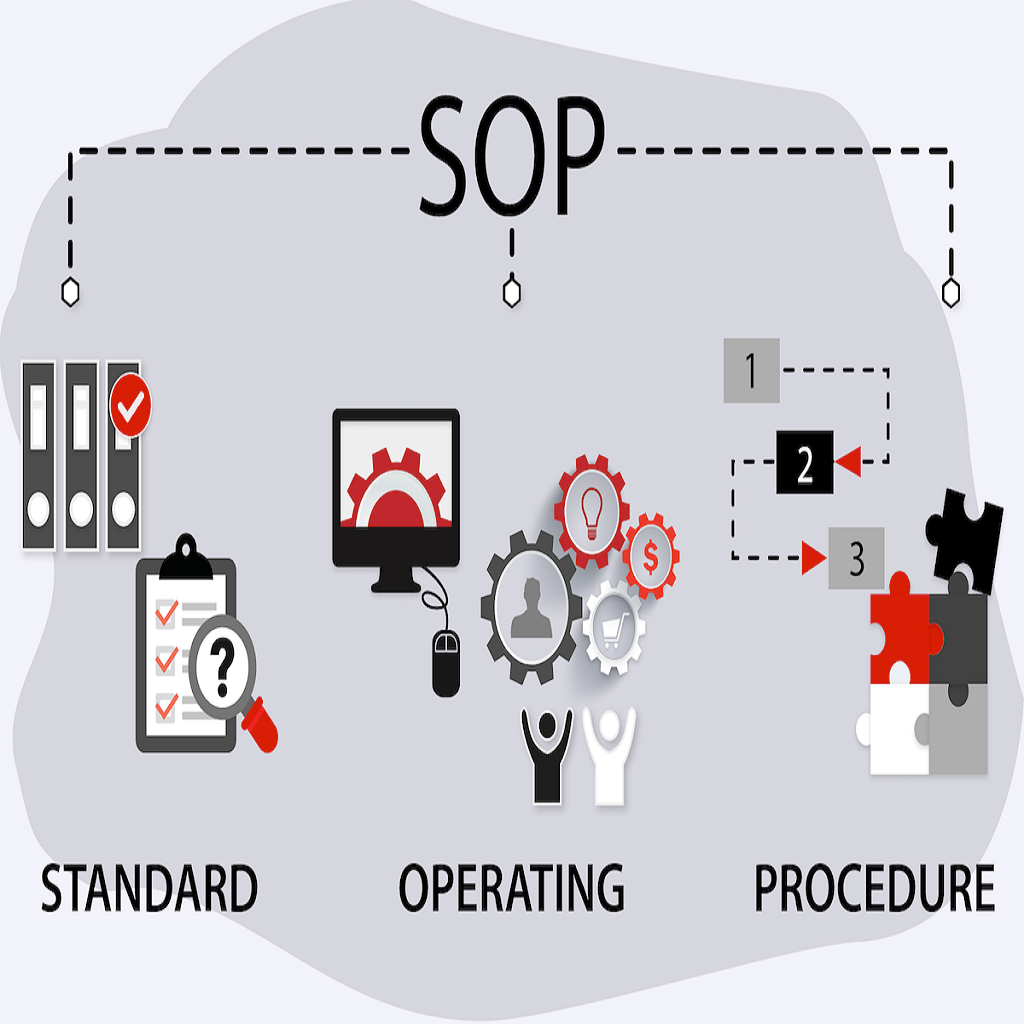
In today’s fast-paced business world, having a standardized and consistent approach to operations is crucial for success. This is where Standard Operating Procedure (SOP) comes into play. SOP, or Standard Operating Procedure, consists of sequential instructions delineating how to carry out a particular process or task within an organization.
This blog post will dive deep into SOP, exploring its purpose, importance, and how to create and implement them. Let’s examine tangible instances of successful SOP implementation across different industries. By the end of this blog, you will have a comprehensive understanding of SOP and its crucial role in driving success. Let’s get started!
What Is Standard Operating Procedure?
A Standard Operating Procedure comprises a documented set of instructions that offers detailed, step-by-step guidance for performing a specific organizational task or process. Here are some critical points about SOP:
- SOP is written documents that outline the standard procedures and best practices for carrying out a particular task or process.
- They serve as a reference for employees, ensuring consistency, efficiency, and operation quality.
- SOP provides explicit instructions, including specific steps, required tools or resources, and safety considerations.
- They help streamline workflows, minimize errors, and ensure compliance with regulations or industry standards.
- It is essential for training new employees and maintaining consistency when multiple individuals are involved in performing the same task.
- They can cover many processes, such as manufacturing operations, customer service protocols, inventory management, and safety procedures.
- It is regularly reviewed and updated to incorporate process changes, technology, or regulations.
- They contribute to process improvement by identifying bottlenecks, inefficiencies, or opportunities for optimization.
- It promotes a standardized approach across the organization, enabling smoother coordination and improved collaboration.
- Compliance with SOP is often monitored and enforced to ensure adherence to established procedures.
Overall, SOP is crucial in maintaining an organization’s operational efficiency, quality control, and regulatory compliance.
Examples Of SOP In Different Industries
SOP is used in various industries, including manufacturing, healthcare, hospitality, and more. Here are a few examples:
- Manufacturing
In the manufacturing industry, they ensure the quality and consistency of the products being produced. SOP may include procedures for equipment maintenance, production line set-up, and quality control checks.
- Healthcare
In the healthcare industry, they ensure patient safety and quality care. SOP may include procedures for infection control, medication administration, and patient monitoring.
- Hospitality
In the hospitality industry, they ensure a consistent customer experience. SOP may include procedures for check-in and check-out, housekeeping, and food preparation.
Types Of SOP
There are several types of SOPs, including:
- Procedural SOP
These SOPs outline the steps that need to be followed to complete a specific process.
For example, a procedural SOP for a manufacturing company may outline the steps to assemble a product.
- Informational SOP
These SOPs provide information about a specific process or task.
For example, an informational SOP for a healthcare organization may provide information about the signs and symptoms of a particular illness.
- Operational SOP
These SOPs provide information about how a particular system or equipment should be operated.
For example, an operational SOP for a manufacturing company may outline the steps to operate a particular piece of machinery.
- Safety SOP
These SOPs provide information about safety procedures and precautions for a particular process or task.
For example, a safety SOP for a healthcare organization may outline the procedures to be followed in case of a fire.
- Administrative SOP
These SOPs provide information about administrative processes such as record-keeping, reporting, and communication. For example, an administrative SOP for a manufacturing company may outline inventory management and reporting procedures.

Why Are SOPs Important?
Standard Operating Procedures (SOP) are crucial for the success of any organization. They serve several important purposes, including:
- Ensuring Consistency And Quality
It ensures that processes and tasks are carried out consistently, producing high-quality products and services.
By providing detailed instructions on how tasks should be performed, SOP helps to eliminate variations in the quality of work performed by different employees.
This consistency in the work performed also helps meet customer expectations and improve customer satisfaction.
- Improving Efficiency And Productivity
They provide a systematic and structured approach to carrying out tasks and processes.
They help streamline workflows, reduce redundancies, and optimize resource utilization, improving efficiency and productivity. By providing a clear and organized working method, SOP saves time and effort, leading to higher productivity.
- Minimizing Risk And Errors
By identifying potential risks and providing detailed instructions on mitigating them, SOP ensures that tasks are carried out safely and without incident.
This not only protects employees but also protects the organization from legal liability and reputational damage.
- Ensuring Compliance With Regulations and Standards
By providing clear instructions on how tasks should be performed, SOPs help organizations meet Legal and regulatory obligations, including health and safety regulations, are taken into account, environmental standards, and quality control standards.
Compliance with these regulations and standards also helps to improve the organization’s reputation and credibility.
What Is The Purpose Of SOP In Sales And Marketing?
Standard Operating Procedures (SOP) are crucial in ensuring efficient and effective operations in marketing and sales. Here are some lines highlighting their importance:
- SOP in marketing:
- Marketing SOP provides a structured framework for executing marketing strategies, ensuring consistency and alignment with business objectives.
- They outline the step-by-step processes for various marketing activities, including campaign planning, content creation, google ads, and lead generation.
- Marketing SOPs help maintain brand consistency, ensuring that messaging, visuals, and brand identity are cohesive across all marketing platforms.
- By following them, organizations can streamline workflows, improve efficiency, and deliver targeted and impactful marketing campaigns.
- SOP in Sales:
- Sales SOP defines standardized processes and best practices Across the sales cycle, from lead generation to the closing stage of deals.
- They outline the steps for lead qualification, handling objections, conducting sales presentations, and managing customer relationships.
- It ensures that the sales team follows a consistent approach, leading to improved customer experiences and higher conversion rates.
- By implementing it, organizations can establish clear guidelines for sales activities, optimize sales performance, and enhance customer satisfaction.
- Integration of SOP in Marketing and Sales:
- Integrating marketing and sales SOP fosters alignment and collaboration between the two departments, creating a seamless customer journey.
- Integrated SOP facilitates effective communication, lead handoff, and coordinated efforts to convert leads into customers.
- They promote sharing valuable insights and data between marketing and sales, enabling data-driven decision-making and continuous improvement.
- By aligning marketing and sales through integrated SOP, organizations can optimize the sales funnel, enhance customer acquisition, and drive revenue growth.
Overall, SOPs are instrumental in guiding and standardizing marketing and sales processes. Consequently, they lead to successful marketing campaigns, enhanced sales performance, and improved business results.
Creating Standard Operating Procedure
Creating Standard Operating Procedures (SOP) is essential for streamlining business operations and ensuring consistency, efficiency, and quality. Invest time and effort into creating SOP to optimize your business processes and enhance productivity.
Identifying Processes And Tasks
It is initiating the development of an efficient Standard Operating Procedure (SOP) identifying the processes and tasks that require a documented set of instructions.
Identifying the processes and tasks critical to the organization’s success and significantly impacting the quality of the product or service delivered is essential.
The identification process should involve a cross-functional team, including individuals engaged in the process and those impacted by it.
Defining The Scope Of The SOP
After identifying processes and tasks, the subsequent step involves defining the scope of the SOP.
The scope should define the boundaries of the SOP, including what it covers and does not cover. The scope should also identify any relevant regulations, industry standards, and best practices that must be followed.
Outlining The Steps Of The Process
The next step is to outline the steps involved in the process. The steps should be detailed and comprehensive, including any necessary information, such as:
- Measurements,
- Timings, and
- Specific actions are required.
The steps should be organized logically, starting with the first and ending with the last steps.
Recognizing Potential Risks And Devising Strategies To Mitigate Them
The next step is to identify any potential risks associated with the process and develop a mitigation plan.
Risks can include safety hazards, environmental concerns, or quality issues. It is crucial to pinpoint the root cause of the problem and develop a plan to prevent it from occurring.
This can include adding safety equipment, changing the process flow, or retraining employees.
Determining Roles And Responsibilities
Once the steps of the process have been outlined, it is essential to determine the roles and responsibilities of the individuals involved.
This entails recognizing individuals accountable for each step, determining who can approve the process, and who is responsible for maintaining the SOP.
It is essential to ensure that each individual’s responsibilities are clearly defined to ensure the process is carried out consistently and efficiently.
Developing A Review And Approval Process
The final step is to develop a review and approval process for the SOP. This process should include a review by knowledgeable individuals about the process and its impact on the organization.
The review should ensure that the SOP is accurate, up-to-date, and consistent with regulatory requirements, industry standards, and best practices.
Once the SOP has been reviewed and approved, it should be communicated to all individuals involved and regularly reviewed and updated.

Implementing And Maintaining SOP
Implementing and maintaining Standard Operating Procedures (SOP) is crucial for organizations to ensure consistent and efficient operations. Once SOPs are created, following a structured approach to implement and maintain them effectively is essential. Here are vital steps to consider:
Training Employees On SOP
Once the SOP has been created, training employees on their content and how to follow them is essential. This includes providing detailed instructions, hands-on training, and opportunities for questions and feedback.

Establishing A Process For Monitoring And Updating SOP
Regular reviews and updates of SOPs are necessary to incorporate regulation changes, ensuring accuracy and compliance with industry standards or internal processes. Establishing a method for monitoring and updating SOPs ensures that they remain current and effective.
Communicating Changes To Employees
When updates are made to SOP, it is essential to communicate the changes to all affected employees. This can include training on the updated SOP or posting the changes in a shared location.
Evaluating The Effectiveness Of SOP
Periodic evaluations of SOP can help organizations identify areas for improvement and ensure that the procedures are still effective. This can include measuring performance metrics, soliciting employee feedback, or conducting audits to ensure compliance with regulatory requirements.

Final Thoughts
In 2023 and beyond, creating effective Standard Operating Procedures (SOP) is crucial for operational excellence. SOP provides consistency, efficiency, and quality in tasks and processes. By adhering to the steps detailed in this blog post, you can develop a comprehensive SOP that drives success. Regularly review and refine SOP, communicate and train employees effectively, and adapt them to changing business requirements. Creating SOP is an investment that pays off in increased productivity and efficiency. Embrace the systematic approach to SOP development and empower your organization for sustainable success.
If you are stuck in place, please leave your questions in the comment section. We will be happy to answer you.
Thanks for reading 🙂








No Comments